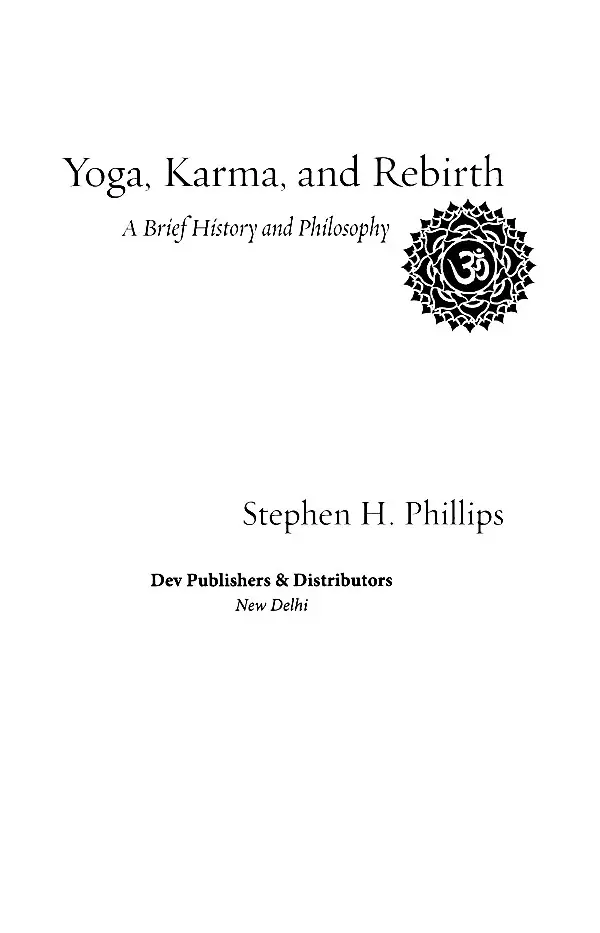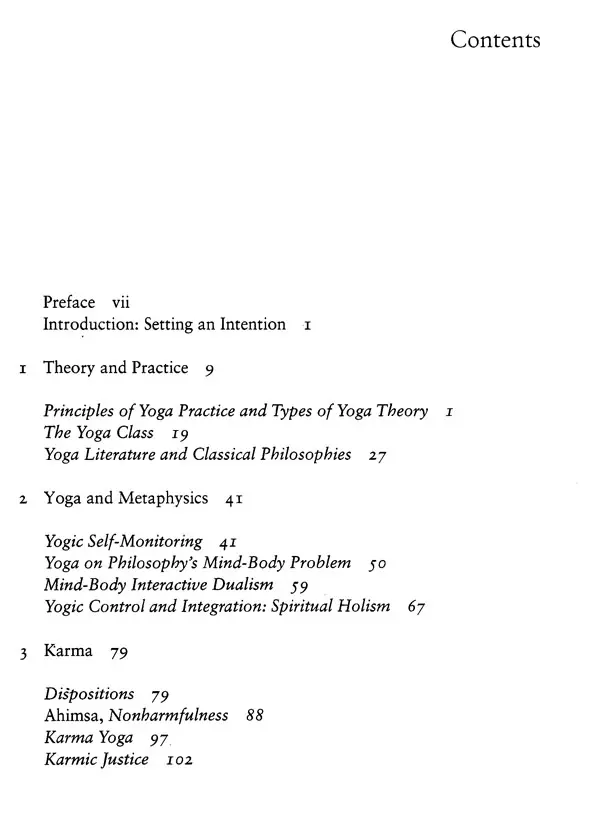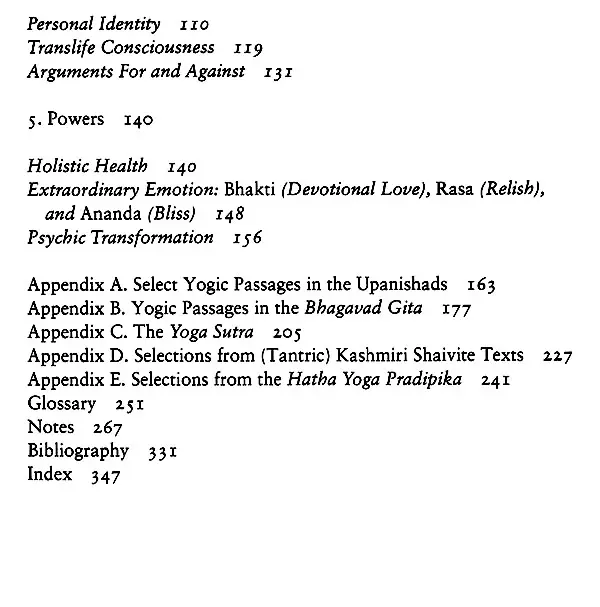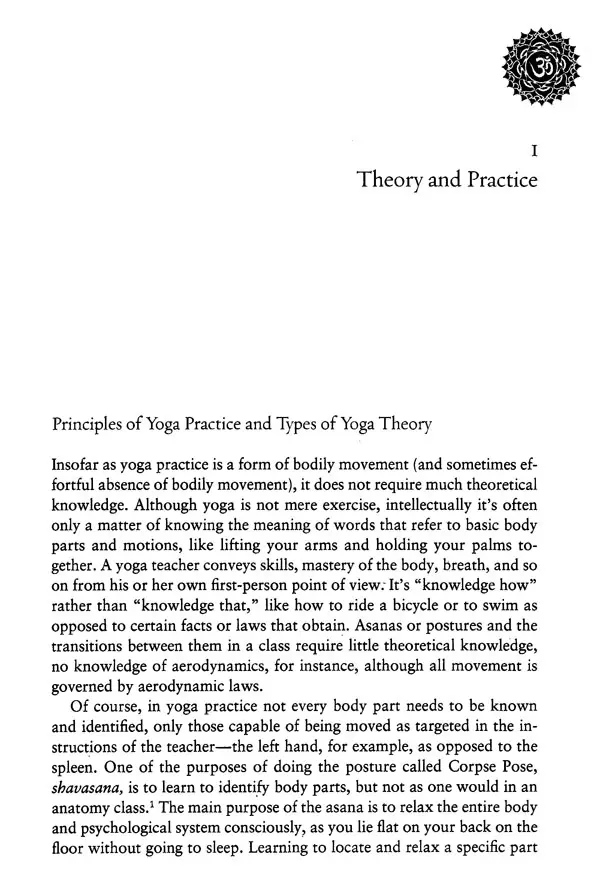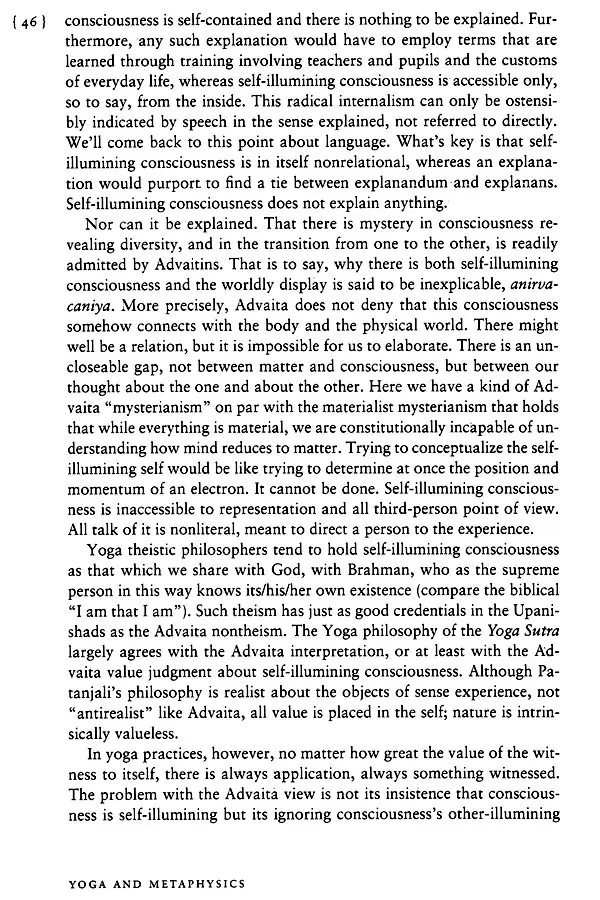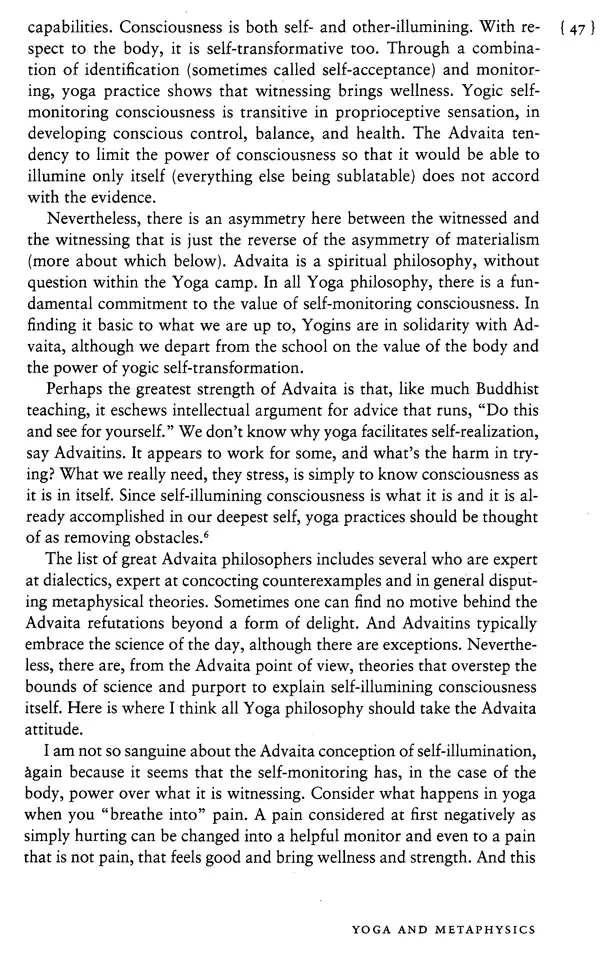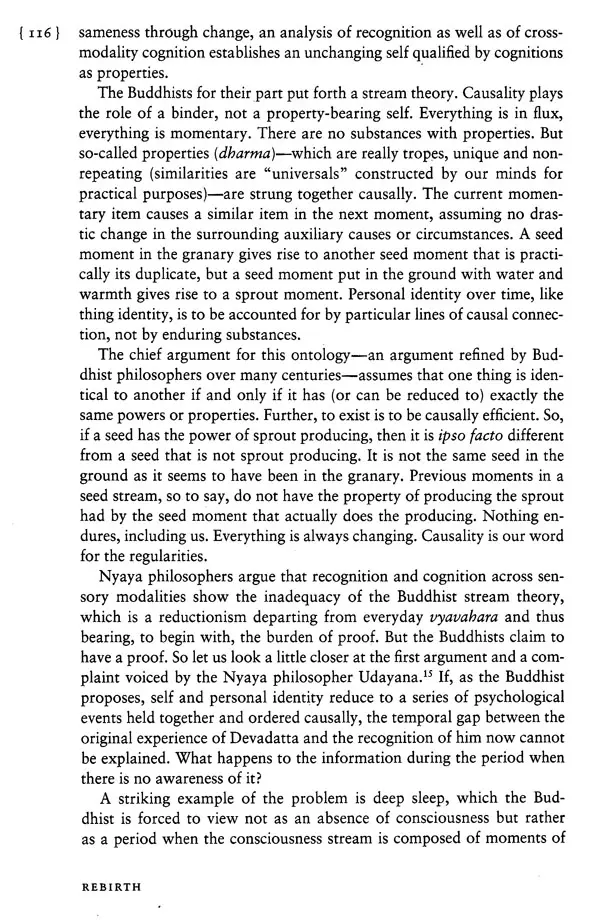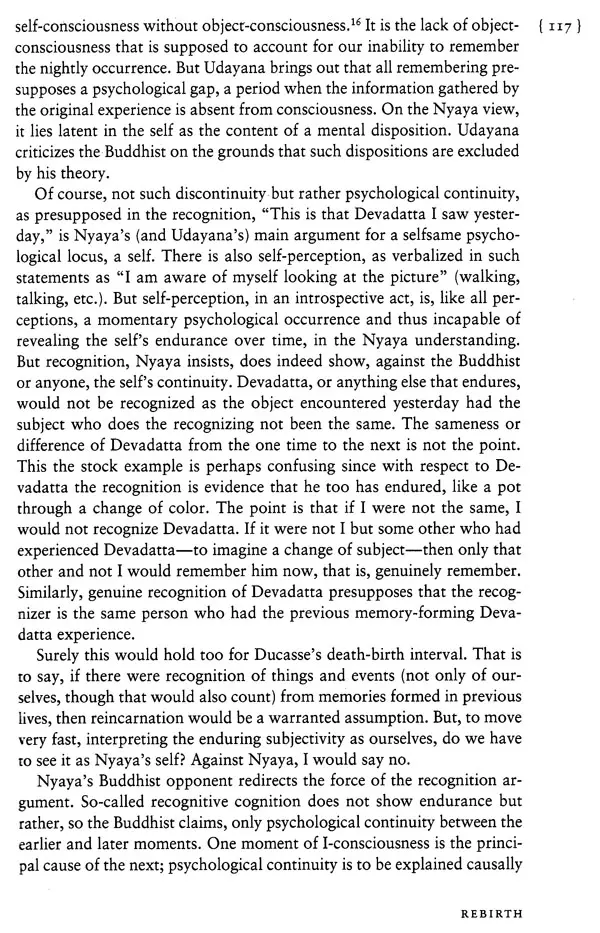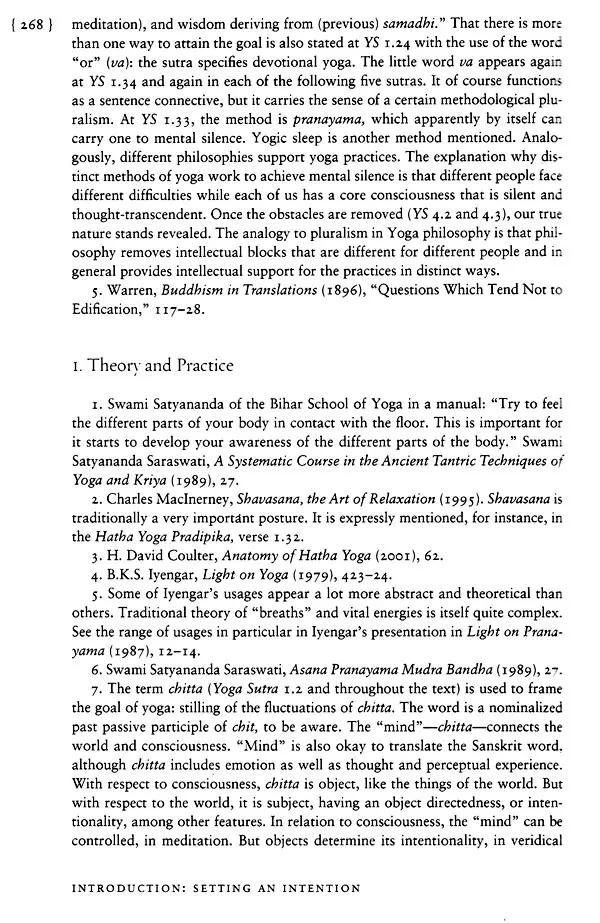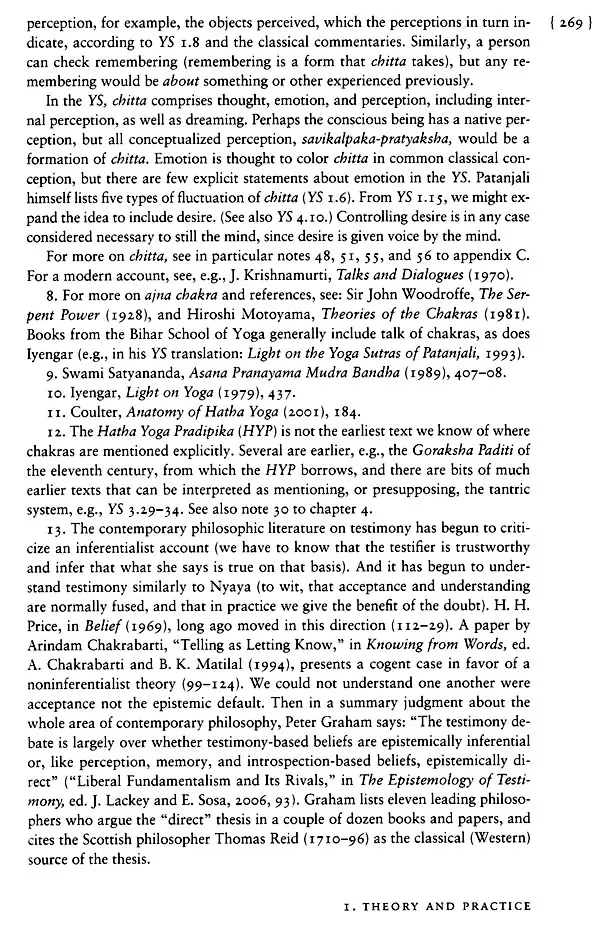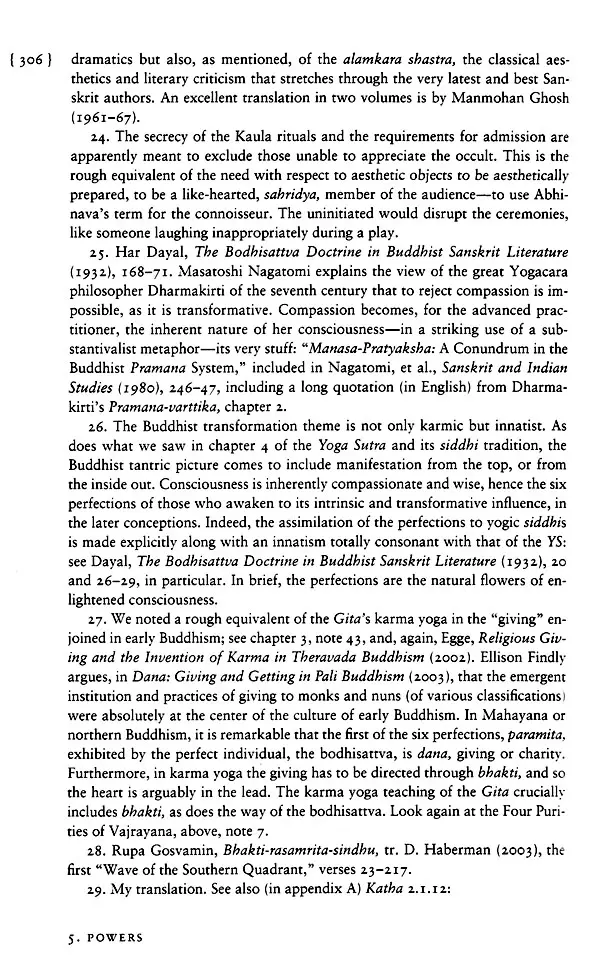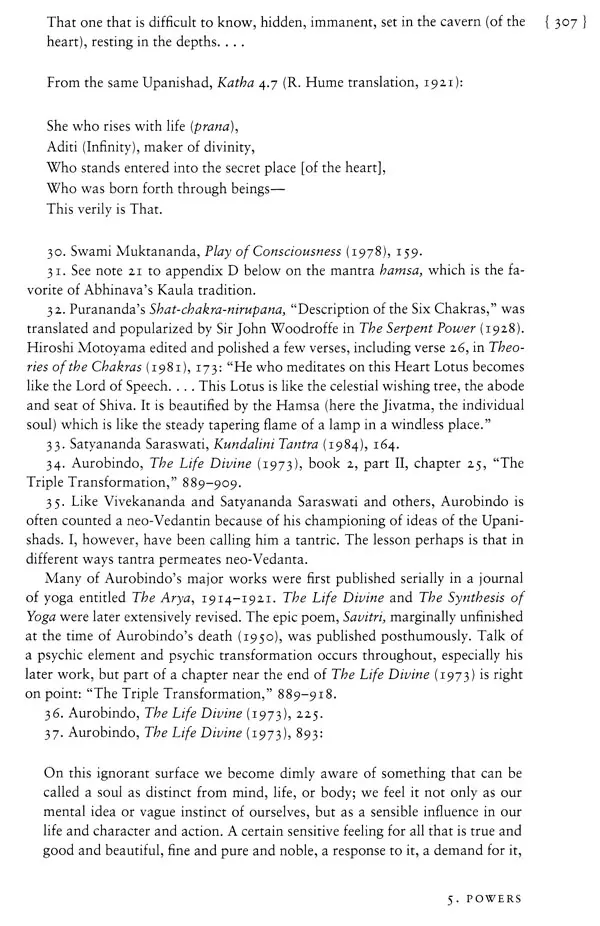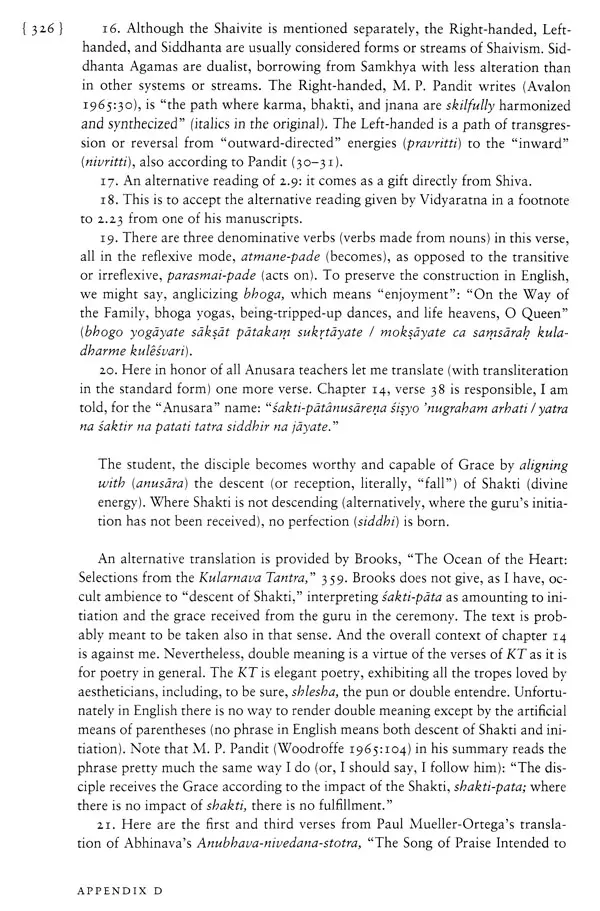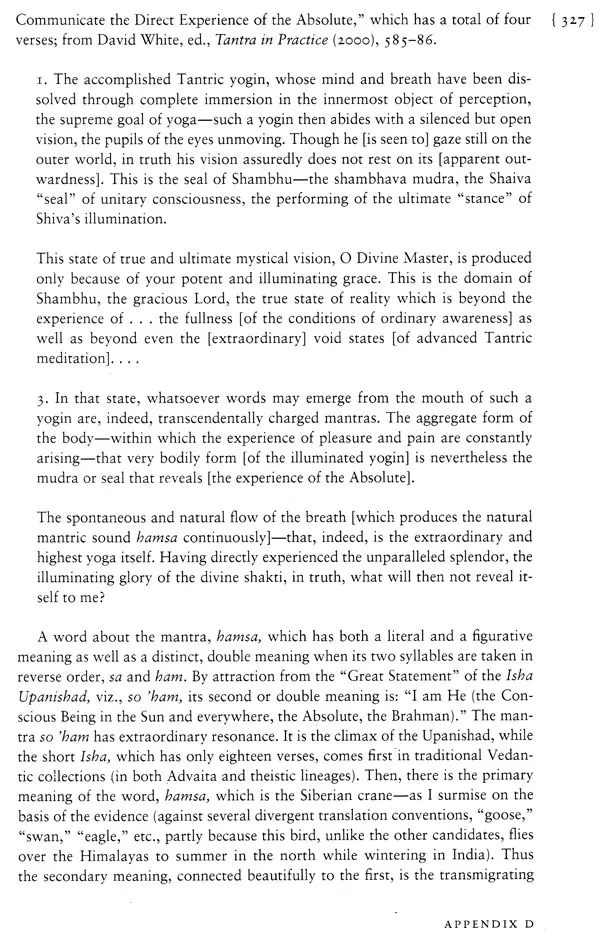
Yoga, Karma, and Rebirth
Book Specification
| Item Code: | UAQ011 |
| Author: | STEPHEN PHILLIPS |
| Publisher: | Dev Publishers and Distributors |
| Language: | English |
| Edition: | 2016 |
| ISBN: | 9789381406656 |
| Pages: | 366 |
| Cover: | PAPERBACK |
| Other Details | 9.00 X 6.00 inch |
| Weight | 470 gm |
Book Description
FOR SERIOUS YOGA PRACTITIONERS curious to know the ancient origins F of the art. Stephen Phillips, a professional philosopher and sanskritist with a long standing personal practice, lays out the philosophies of action, knowledge, and devotion as well as the processes of meditation, reasoning, and self-analysis that formed the basis of yoga in ancient and classical India and continue to shape it today.
In discussing yoga's fundamental commitments, Phillips explores traditional teachings of hatha yoga, karma yoga, bhakti yoga, and tantra, and shows how such core concepts as self-monitoring consciousness, karma, nonharmfulness (abima), reincarnation, and the powers of consciousness relate to modern practice. He outlines values implicit in bhakti yoga and the tantric yoga of beauty and art and explains the occult psychologies of bashar skandhas, and chakra. His book incorporates original translations from the early Upani shads, the Bhagavad Gita, the Yoga Sutra (the entire text), the Hatha Yoga Pradipika, and seminal tantric writings of the tenth-century Kashmiri Shaivite, Abhinava Gupta. A glos sary defining more than three hundred technical terms and an extensive bibliography offer further help to nonscholars. A remarkable exploration of yoga's conceptual legacy, Yoga, Karma, and Rebirth crystallizes ideas about self and reality that unite the many incarna tions of yoga.
STEPHEN PHILLIPS is professor of philosophy and Asian studies at the University of Texas at Austin and has been visiting professor of philosophy at the University of Hawaii, Manoa, and at Jadavpur University, Kolkata. He is the author of six books, including Epistemology of Perception: Gangesa's Tattvacintamani, Jewel of Reflection on the Truth About Knowledge, and numerous papers, many featuring first-time translations of late classical San skrit philosophic texts.
This book grew out of an upper-division course I developed at the University of Texas at Austin, "Yoga as Philosophy and Prac tice," and I would like to thank first of all Ellen Briggs Stansell, my teaching assistant for its first three years. Together we discussed all the topics broached here. Concurrently Ellen became a yoga teacher as well as a doctoral candidate, completing a thesis on the Bhagavad Gita Matthew Dasti and Neil Dalal, also graduate students at Texas, made helpful comments, as did my philosophy colleague and fellow yoga stu dent Kathleen Higgins. Matthew helped me select passages from the Gita to translate in appendix B. Insights and lots of feedback were provided by my wife, Hope. Kisor Chakrabarti, J. N. Mohanty, and Peter Heehs read portions of early drafts and made solid suggestions. For chapters 2, 3, and 4, the book has benefited from extensive comments by Colin Foote, particularly with regard to Buddhist theories and practices.
Let me thank my yoga teachers, many of whom I have doubtless copied in scripting a yoga class in chapter 1: Brigitte Snyder (best of flow teachers), John Schlorholtz (author of the DVD series Ageless Yoga, and my brother in-law), Peggy Kelly (founder of Austin School of Yoga), Mary Keator, Cary Choate, Jessica Montgomery, Annick Sebbane, Ravyn Abboushi, Genevieve Gilbreath, Larissa Rogers, Jenn Wooten, Charlie Llewellyn, Pam Brewer, Jessica Wozniak, Brienne Brown, Devon Dederich, Jerry Balderas, Enid Baptiste, Kaye Klier, Matt Borer, Rachel Hector, Ana Pilar, Elizabeth Cafferky, Chuck Hausman ("Kewal"), Dorothee Bethscheider ("Dodo" in Auroville, South India), Kimberley Jones, Esta Herold ("Seva"), Tenille Collard, Jessica Goulding, Jenny Dawson, and Christina Sell. Two of these guru-jis attended my lectures on Indian philosophies at UT and read por tions of the book in draft, providing helpful reactions; Ravyn Abboushi and Genevieve Gilbreath thus deserve special acknowledgment-as does Peggy Kelly, dean of Austin yoga teachers, and senior Anusara teacher Christina Sell, who read portions of the Kularnava Tantra with me. Tracie Brace, founder of Yoga Rasa, Houston, and Michael Benton ("Mehtab") and friends at Yogayoga, Austin, graciously rewarded a little teaching of Sanskrit on my part by enriching my practice through help as teachers or students, as did dozens more, all of whom I salute with heartfelt thanks.
The consciousness traditions of ancient India constitute the roots of yoga teaching. Buddhism carried yoga eastward, and all East ern spiritual traditions-including the martial arts-have common background with the yoga traditions of India. Some have argued that Christianity too is influenced by yoga, perhaps in the figure of Jesus himself. Clearly Sufism is. In India, traditions of yoga practice include or overlap with Vedantic, Jaina, Buddhist, Sikh, Vaishnavite, and Sharvite teachings. These are multidimensional complexes of ideas and culture, and are in large part the origins of yoga training programs that have spread all over the world.
There is, for example, the invocation, dedication, or other ritual be ginning of a typical yoga class. This can be as simple as a single out breath of the chant om, which is a mantra or sacred syllable accord ing to very old Upanishads. Upanishads are "secret teachings" composed in Sanskrit, which was the lingua franca of ancient and classical India Upanishads are the oldest texts in which the word yoga is used in our sense, our anglicized "yoga" (some earlier usages carry a different mean ing). The meaning and symbolism of om is laid out very early in the Mandukya Upanishad (c. 500 v.C.E.) and elsewhere: "Om-this syllable is all this (universe)" and so on."
There are indications of yoga practice even earlier than the earli est Upanishads. The Rig Veda (Rig" from Sanskrit rik, which means "verse"), the oldest text in Sanskrit (c. 1200 B.C.E. or earlier), is a source for yoga teaching, although, to be sure, there are disputes about its mean ing. We will survey yoga literature in the last section of chapter 1, setting the Vedas, Upanishads, Bhagavad Gita, Yoga Sutra, and other yoga texts in chronological order, as we identify the main themes of Yoga phil osophy and trace their development up to the modern period. This book will become a first-person defense of a contemporary view that all yoga practitioners and sympathizers can stand behind confidently. But first we will review our Yoga inheritance.
Book's Contents and Sample Pages
